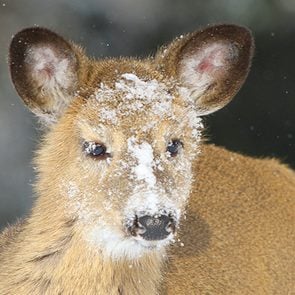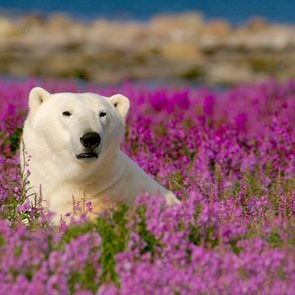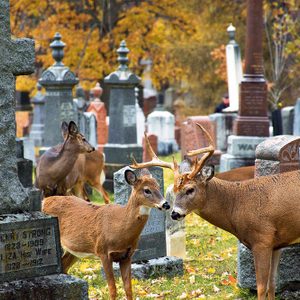Capturing British Columbia’s Wildlife on Camera
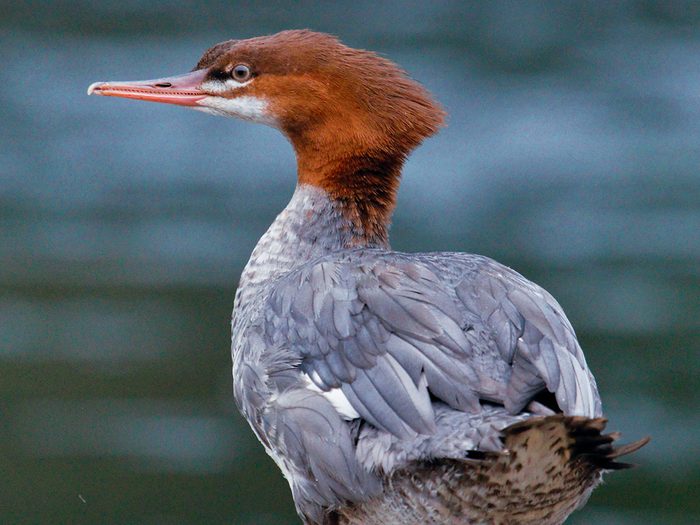
For these avid photographers, salmon, birds and bears make up "B.C.’s triad."
Autumn in Canada is a beautiful season. The days are still warm, the leaves are changing colours, and the bugs are not a problem. Whether it’s a day outing or longer, it can be an amazing time for camping, hiking, wildlife viewing and especially photography. Here in British Columbia, I enjoy capturing shots of salmon, birds and bears—what I like to call the B.C. triad.
In B.C., most communities experience a salmon run, and the fall runs are frequently the largest. The Adams River sockeye run is world famous, and every fourth year is considered to be a dominant year, with numbers often in the millions. Next year (2022) should be a large run, but even small, non-dominant runs can be worth a visit. Smaller runs offer opportunities for viewing in small creeks, provincial parks and large rivers. Essentially, the salmon start from the ocean to return to the location of their birth where they spawn and die. The five species of salmon that thrive in B.C. include chinook, coho, chum, sockeye and pink.
Kokanee are landlocked salmon that spawn in the fall. Unlike regular sockeye salmon, they spend their entire lives in fresh water, and are smaller than sockeye, but bear a strong resemblance because of their colour (green and red), and the males have the same distinct hooked nose.
There are many great places to watch for salmon spawning, mainly in October and November. There are several provincial parks where salmon have to navigate waterfalls and difficult terrain in order to reach spawning grounds. If you are looking for a challenge, consider a trip to capture a photo of a salmon jumping into Bailey’s Chute in Wells Gray Provincial Park.
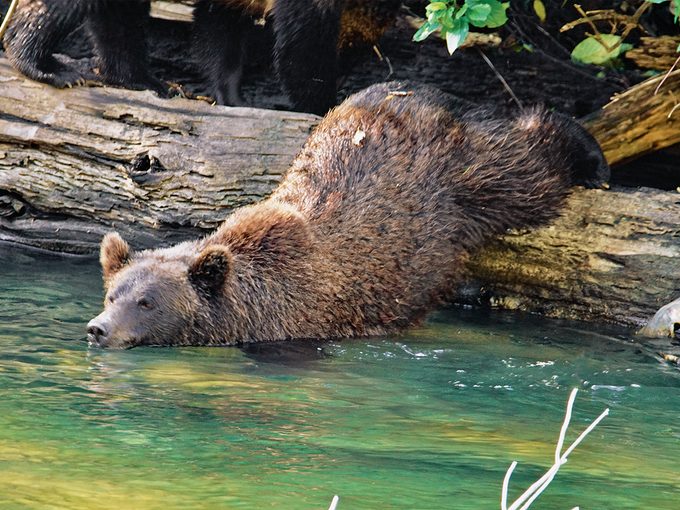
Spotting a Bear
Most often, where you find salmon you’ll find birds, for two reasons. Many birds continue to forage along the shores, and during spawning season, gulls and ducks congregate and feed. Scavengers, including crows, ravens, gulls and eagles, complete the team. The gulls will frequently eat everything from eyeballs to fish guts. It’s not unusual in a day’s outing to observe common mergansers, kingfisher, great blue heron and eagles.
For the past few years, my son, Jamie, and I have spent time on the South Thompson River, travelling by boat up river from Lafarge to Pritchard.
When we start out we are never sure what we’ll see, which adds to the enjoyment of the day. Although we are both serious photographers, one of us seems to have quicker reflexes. By the time Jamie has spotted a bear on the riverbank, I am still fumbling to get out my gear.
This past year, in October 2020, I was determined to “get a bear.” On the return trip I saw what I thought was an old 45-gallon drum resting on its side in the river. I called “bear” as soon as I saw it, hoping to play a trick on Jamie who was running the motor.
It turns out the joke was on me. The closer we got the larger the “drum” became, and I soon realized it was a bear resting on the bank of the river. Black bears come in all colours including black, brown and “old oildrum rust.”
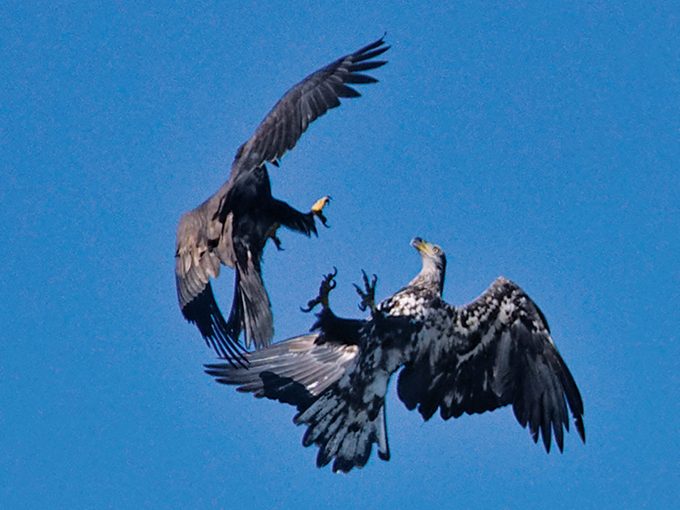
Never a Dull Moment
In addition to the benefits of fresh air, photography provides us with unexpected opportunities. Before we go, we never know what we’ll see, and although the location is the same, what we observe and photograph is always different. Two years ago, for example, Jamie captured several great bear photos. We also each have different pictures of similar scenes, such as eagles in flight, or perched in trees drying their wings.
This past year, we saw some interesting action with crows chasing eagles, eagles diving at each other and a solitary kingfisher cruising the shore and diving into the river. We also estimate that we saw thousands of Canada geese.
Finally, there are locations in B.C. that are world renowned for grizzly bear float trips. After seeing Jamie’s spectacular photos from a trip he took to Bella Coola in September of 2019, we decided to embark on a new adventure. The opportunities to capture photos of landscapes, waterfalls and bears were numerous. When I asked my grandson what the best experience on the five-day trip was, he responded: “Well, Grandpa, I hate to say it, but it was when you fell into the Atnarko River.” That is another story.
Next, check out what it’s like photographing the wildlife of the Laurentians from a kayak.
